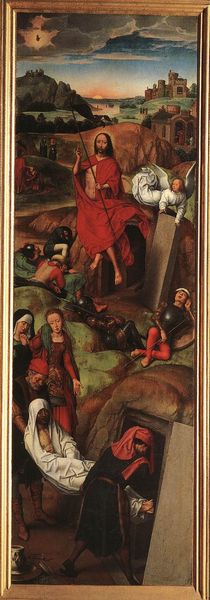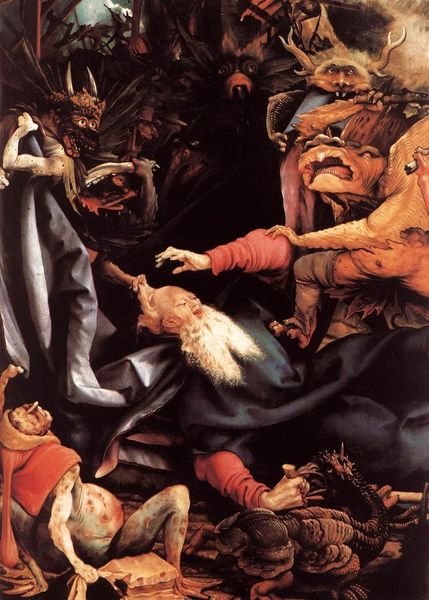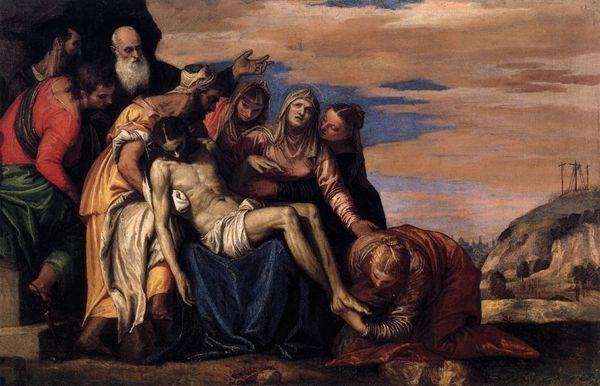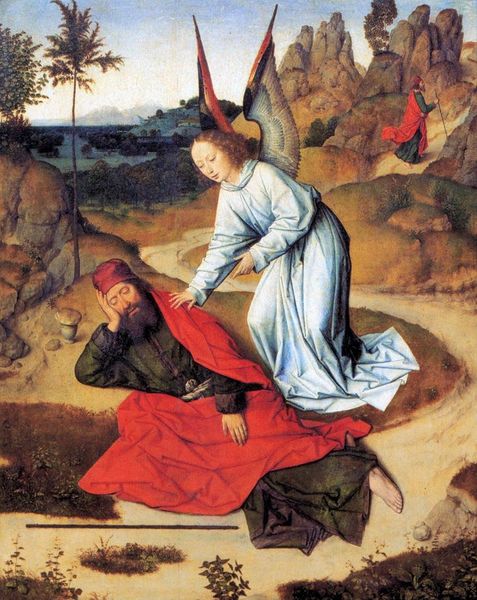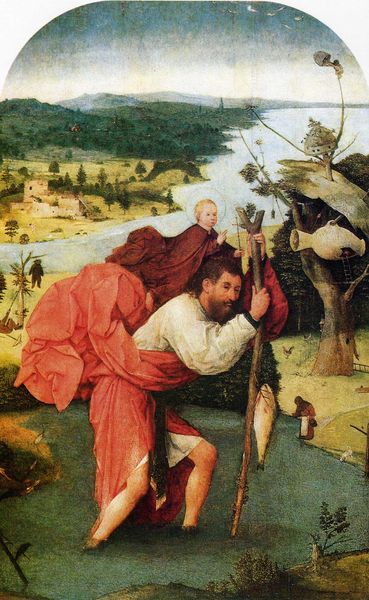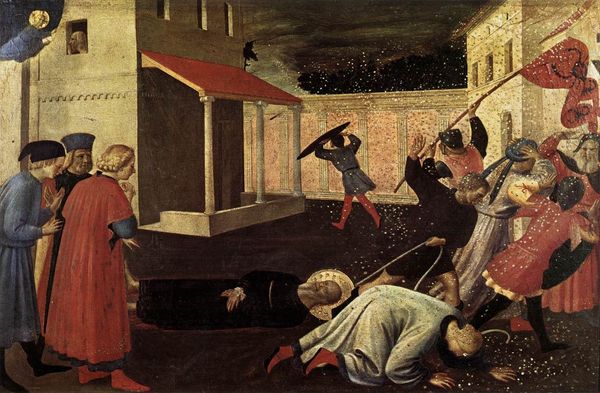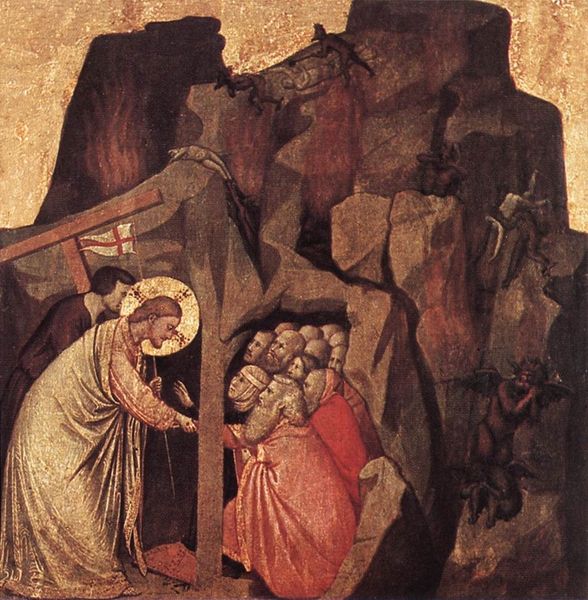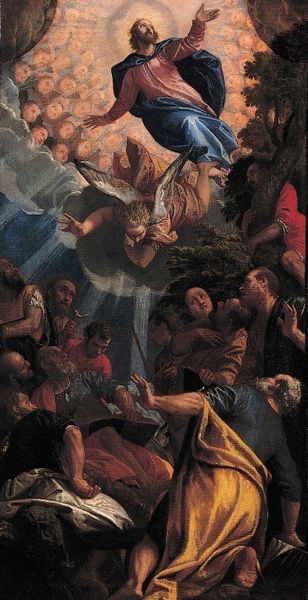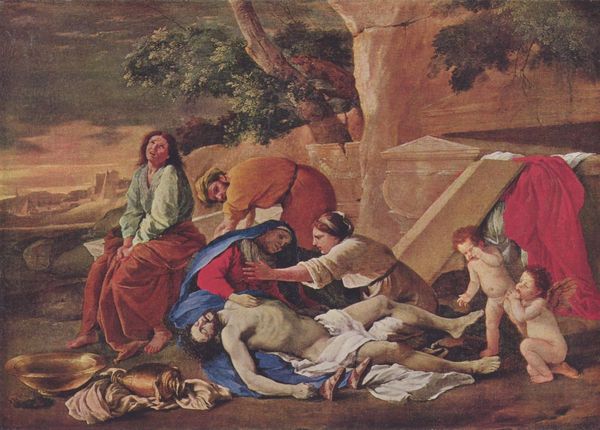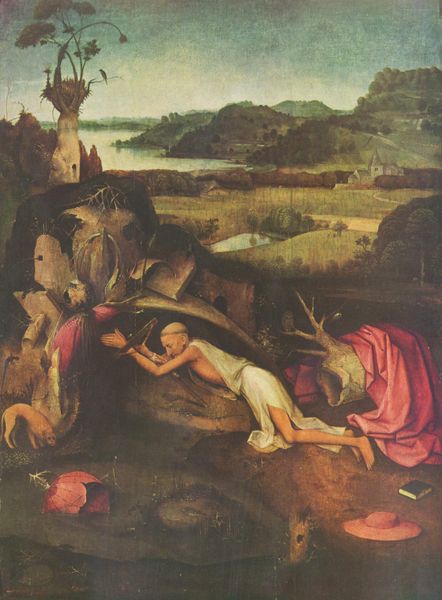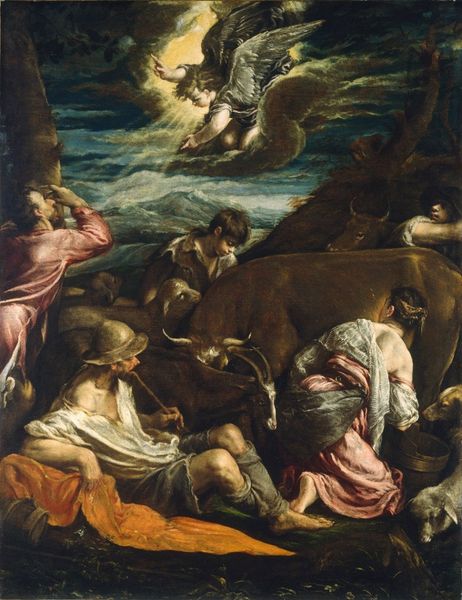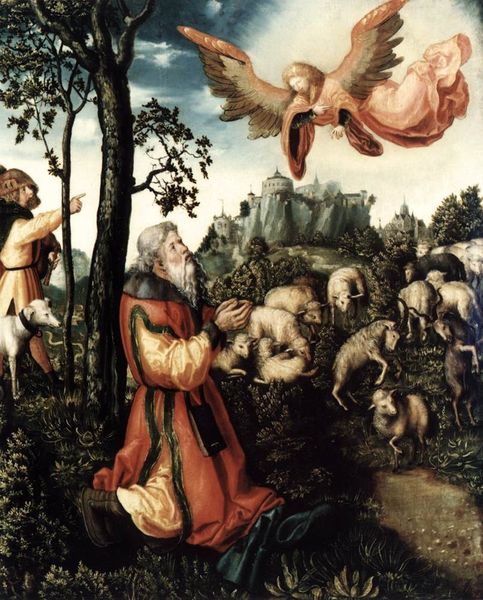
#
allegories
#
acrylic
#
abstract painting
#
symbol
#
charcoal drawing
#
painted
#
possibly oil pastel
#
oil painting
#
acrylic on canvas
#
underpainting
#
christianity
#
painting painterly
#
watercolor
#
christ
Dimensions: 53 x 131.5 cm
Copyright: Public domain
Editor: This is Hieronymus Bosch's "Temptation of St. Anthony," painted around 1506. It's an oil on panel piece and what immediately strikes me is how chaotic the scene is – figures are packed together in the strangest ways. What symbolic weight do you think this piece carries? Curator: The chaos you observe *is* the point. Bosch taps into a deep well of anxieties prevalent during his time. Observe how religious iconography merges with monstrous, fantastical creatures. Consider the symbolic potency of St. Anthony himself, often seen as a figure resisting earthly desires and temptations. Editor: I see that! So the grotesque figures, are they all symbolic of temptation? Curator: Exactly! But what kind of temptation? Is it purely sexual? Economic? Think about the anxieties of a rapidly changing society, anxieties about faith, the body, and the material world. The artist has woven all those elements using symbols rooted in religious and folk traditions. How do you think he did this? Editor: Through scale, maybe? The saint is small, surrounded and overwhelmed by these figures, literally consumed by temptations all around him. Curator: Precisely. Scale reinforces the saint's vulnerability. And look closer—are all these figures actively tempting him, or are they also victims, caught in their own struggles? Note the figures in the background and at the top of the painting. Is there also hope embedded within that struggle, or a warning against complacency? Editor: I hadn't considered that they could be victims as well. So the image shows St. Anthony’s inner turmoil. Curator: Yes, that internal struggle externalized on a grand scale. And in turn it symbolizes everyone's struggle against those earthly temptations and sin. Editor: That really broadens my understanding of Bosch and the power of visual symbolism during the early 16th century.
Comments
No comments
Be the first to comment and join the conversation on the ultimate creative platform.
